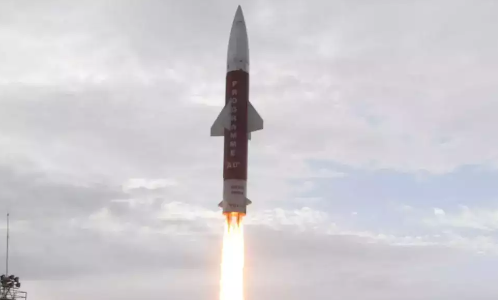DRDO Successfully Tests Phase-II Ballistic Missile Defence System
The Phase-II Ballistic Missile Defense (BMD) system was successfully flight-tested by the Defense Research and Development Organization (DRDO) on July 24, 2024. This test showed that India is getting better at protecting itself against ballistic missiles with lengths of up to 5,000 kilometers. This is a big step forward from the current Phase-I system.
Phases of the BMD System
There are two parts to the BMD program:
- Phase I: Already set up and working, this step can stop missiles from up to 2,000 km away.
- Phase II: This phase, which was just tried, makes it easier to intercept targets up to 5,000 km away.
Test Procedure
As part of the test, a target missile was fired from LC-IV Dhamra to mimic a threat from an enemy. Both land and sea radars picked up the signal, which turned on the Air Defence (AD) interception system. Two minutes later, the Phase-II AD endo-atmospheric missile fired from the Integrated Test Range in Chandipur was used to intercept the target.
Technology and Capabilities
The Phase-II system combines cutting-edge technologies with a network-based structure for warfare:
- Long-range sensors
- Low latency communication systems
- Mission Control Centre
- Advanced interceptor missiles
Together, these parts improve national security by stopping different types of enemy ballistic missile risks within a certain range of altitudes.
Missile Specifications
The AD endo-atmospheric missile is a solid-fueled, two-stage system that is meant to be launched from the ground. Targeting rocket threats in the endo to low exo-atmospheric regions makes the BMD system even more flexible in how it can be used. India’s No First Use nuclear policy makes the BMD an important part of its national defense plan. The growing number of long-range ballistic weapons in the area makes a strong BMD system necessary. This shows how important it is to have your defense systems.
About DRDO
India’s Defense Research and Development Organization (DRDO), which has been around since 1958, has made more than 500 items, such as missiles like the Agni and Prithvi. It debuted the Tejas, a light combat aircraft that was made in India. The “Ventilator 2.0” was made by the Defence Bioengineering and Electromedical Laboratory of DRDO in answer to COVID-19. The organization’s missile technology includes the BrahMos, which was made with help from Russia. DRDO also works on quantum computing and artificial intelligence, and it encourages partnerships with other organizations to develop cutting-edge military technologies.
Month: Current Affairs - July, 2024
Category: Defence Current Affairs







